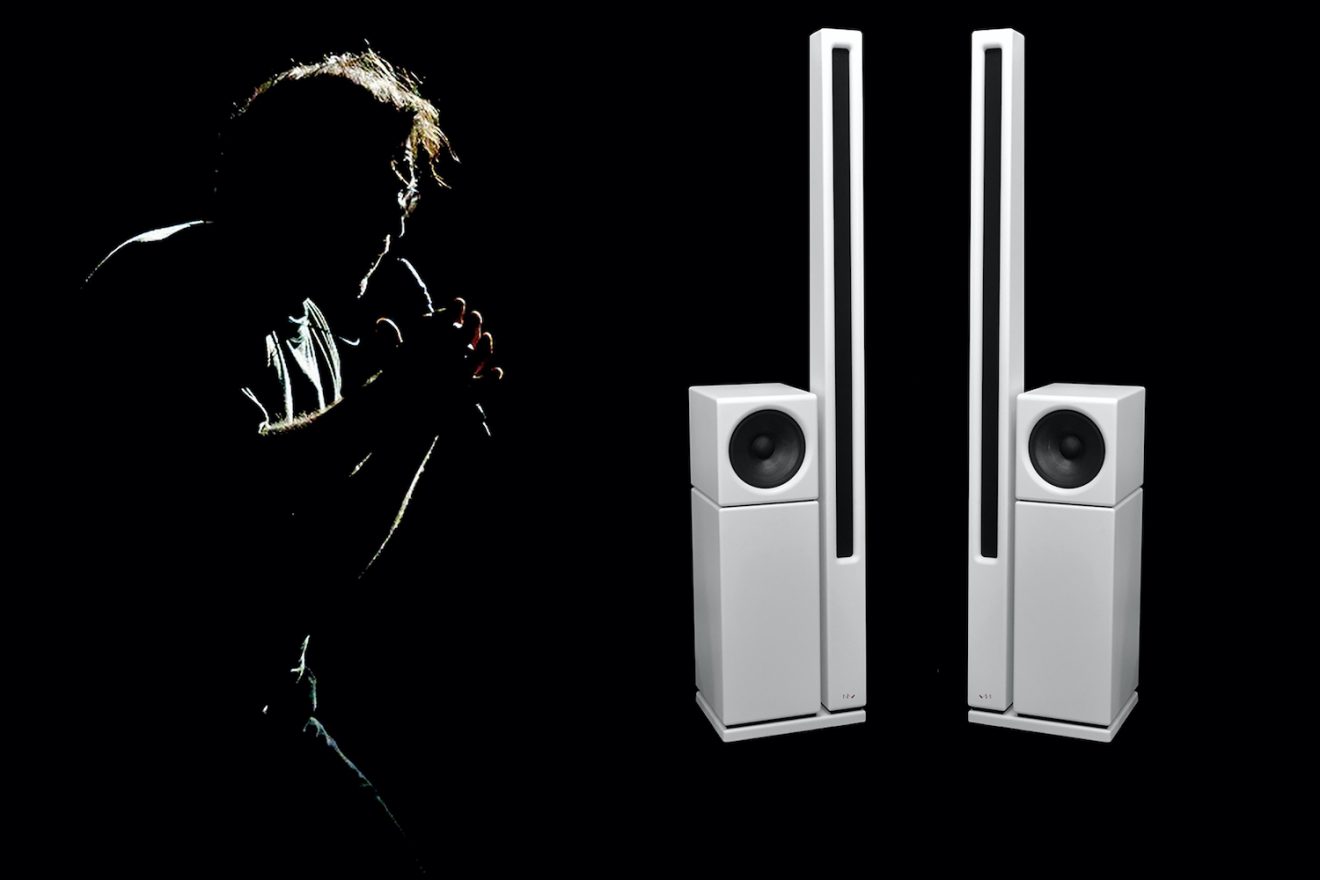Review: Van Medevoort VM ED 7.2 – Van Medevoort designs and builds equipment of an above-average quality level. Solid stuff that lasts a very long time and which, proverbially, can be repaired for many years to come. The sustainability movement. The company therefore has a loyal following. The vM ED 7.2 is the new electrostatic loudspeaker. Time to listen to that.
Van Medevoort
Van Medevoort was founded in 1985. The company designs and builds amplifiers, loudspeakers, DACs, drives, CD players, cables and professional equipment such as guitar amplifiers, microphone amplifiers, microphones and (active) speakers. Making recordings is a secondary activity. Ad van Medevoort has an interest in music from home. His father owned a music store, so Ad grew up with electronic organs and musicians. He has also worked for Audio Technica, Denon and AKG and has experience in the studio world. All products are built in the Netherlands. A permanent employee is Roland, who is responsible for the construction of the equipment and the service.
A striking product is the large, more than two meter high line array system. As common with most line arrays, this loudspeaker consists of a large number of dynamic bass / mid-bass drivers, with the mids and highs being reproduced by an array of tweeters or by a planar driver. Such drivers come in the form of a ribbon, a magnetostat and an electrostat. Van Medevoort supplies the system with tweeters, the vM RDQ, or with electrostatic elements, the vM REQ.
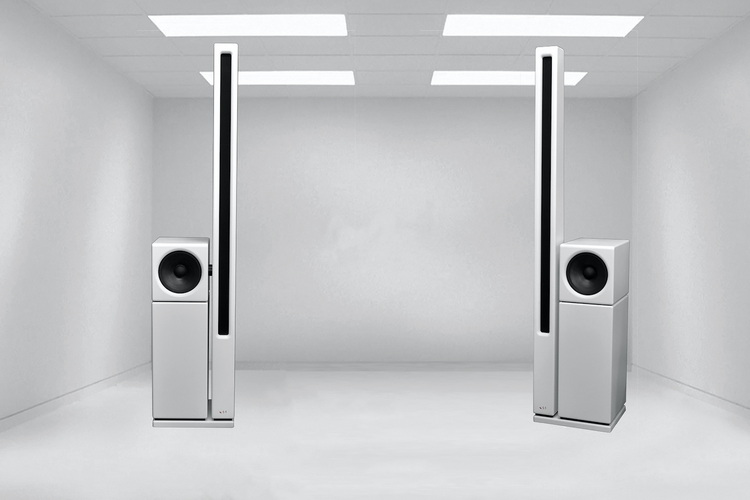
The company’s products have a long technical and economic life. Something new will only come if it means a meaningful improvement. So not a new model every six months. Even the oldest products can still be repaired, modified and maintained. With most mass manufacturers, that service ends after five years. This long lifespan is also current from an environmental point of view. Not the road-throwing economy, but products that last a long time and are repairable. The Nilfisk in the listening room has been there for fifty years, although that room has not been used as a listening room for all those fifty years. The equipment built is very reliable. The failure rate is, according to van Medevoort, among the lowest in the industry. It all means that this company has a steady group of customers, who is looking for a stable and reliable audio environment and does not want to keep up with the issues of the day. Van Medevoort also supplies total solutions. Complete systems, built entirely from Van Medevoort components.
Electrostatic
As a nation, the Netherlands is not doing wrong when it comes to electrostats. We have three manufacturers and there are various brands from abroad on the market. Apparently, the electrostat has a certain popularity in our country. An electrostatic driver (ESD) has a frequency range that is related to the dimensions of the radiating surface. Nothing special, because that also applies to other planar drivers, dynamic drivers and horns. To keep the dimensions of an electrostatic loudspeaker within the limits of what the average Dutch (Henk & Ingrid) still want to have at home, ESDs are often combined with a separate or built-in woofer. A woofer / midrange driver does a bit up to 200-1000 Hz and the ESD does the rest.
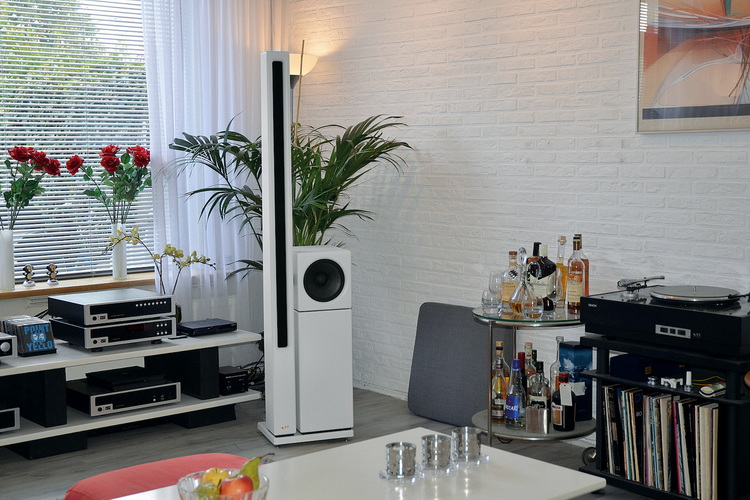
Anyway, an electrostatic panel that displays the full frequency range is simply large from the perspective of physical laws. By combining with a separate subwoofer or a built-in woofer, a system can be built that produces sufficient bass in a living room-friendly format. The reason for having an electrostat has to do with the neutral, fast, dynamic and almost undistorted sound. Electrostats can also build a very convincing internship. That is why electrostats are popular with real music lovers and are also used as a monitor system for record companies and edit suites. In recent years, this unique position of the electrostatic system has faced competition from advanced and transparent dynamic systems from some high-tech manufacturers. Depending on the dimensions, a somewhat smaller ESD can already deploy between 150 and 1000 Hz. No filtering is required within the entire frequency range of such a driver (often up to 30 kHz). There are therefore no phase problems and other deviations (resonances) that can occur in the transition regions.
vM ED 7.2
Van Medevoort has always built hybrid electrostats. The combination with a built-in woofer makes it possible to create a system with living room-friendly dimensions. In addition, it is possible to solve a problem in a creative way that many electrostats (in the past and sometimes still) had problems with. A full-range electrostat necessarily has a large surface. Such a panel is high and wide in order to get sufficiently low and to remain within the height of most living rooms. With a size of roughly 2 meters by 50 cm, it goes low or up to 25 Hz. Only then you again suffer from the well-known hotspot effect. Van Medevoort solved this by opting for a hybrid. The ESD can then be smaller, because it only needs to start at a higher frequency.
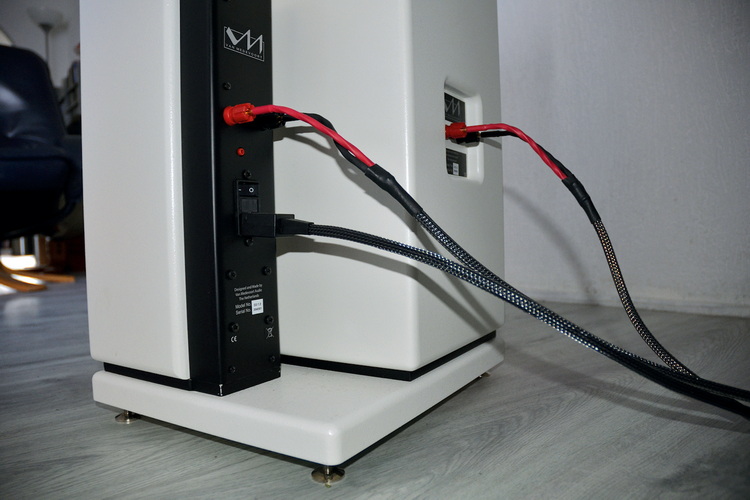
Van Medevoort electrostats are very narrow and work with a wire stator and a mylar membrane with a homogeneously sprayed conductor. That is the basic technology behind the Van Medevoort electrostats. The components of the electrostatic are mounted in an HPL sandwich frame. That gives a lot of stability. Obviously, other manufacturers have other solutions to avoid the hotspot. That is why nowadays large full-range electrostats can also be built without a hotspot effect. Another reason the company builds hybrids is that Ad once stated that full-range ESDs would be slower, more dynamic and have low-end coloring. However, the author thinks that this can be avoided by playing with the amount of force exerted on the membrane per unit area and the homogeneity of the conductive layer.
The first electrostats developed were the EE / EB models. They can still be serviced. The vM ED 7.2 is the latest model. The electrostatic line array has an area of 50mm x 1250mm. This is mounted on the bass unit. This gives the entire speaker a size of 165.2 x 36.0 x 29.8 cm (H x W x D) with a weight of 31 kg. The ESD has an acoustic lens. This means that there is little diffraction and bundling. The large spread in the horizontal plane ensures very good focusing and placement of the instruments in the sound image, says Van Medevoort. The layer unit is mounted in such a way that the radiation of the electrostat and the layer are in phase. The woofer configuration is a technical variation on the isobaric principle devised by Van Medevoort. Constructed from two woofers in a closed housing, the theoretical advantages consist of improved impulse behavior and a higher degree of linearity. One woofer is directed outwards and the second inwards. This specific circuit ensures that resonances disappear. Van Medevoort therefore calls this the vM anti-resonance system.
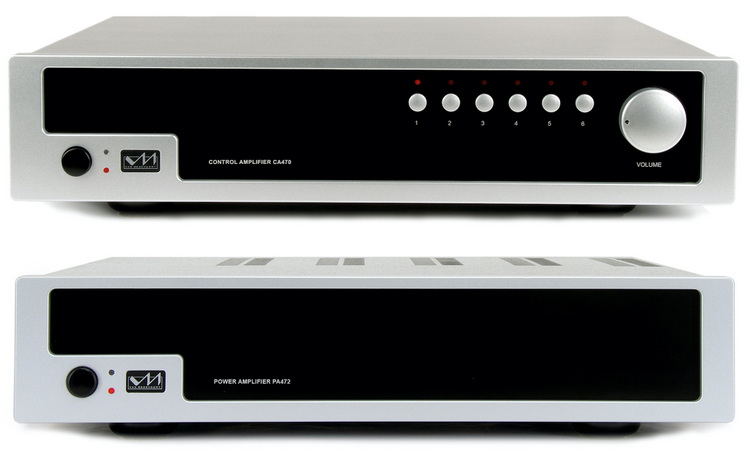
Most hybrid electrostats have always been notorious for the audible mismatch between the panel and the dynamic layer unit. The latter was colored, slow, and the signal lagged behind the fast panel in time. Perhaps not such a problem for many listeners, because the bass reproduction of many fully dynamic floor stands and horn systems, equipped with a dynamic woofer, was not much better either. It is only in the last fifteen years that much more attention has been paid in general to neutral and ‘faster’ bass reproduction. Previously, whole generations have grown up with the idea that the low end should be warm and swampy and that it should swing through the room like an uncontrolled smoke of sound, without any apparent relationship to the rest of the music. You can make that even worse by choosing poorly designed and / or mismatched speaker cables. Anyway, there are currently more and more hybrid electrostats where the match between the panel and the woofer is very good.
The vM ED 7.2’s layer system consists of two 8-inch woofers. They serve as a sub-layer unit and mid-layer driver. Together with the ESD there is then a three-way system with tipping points at 100 and 500 Hz. The efficiency is 90 dB and the impedance is 4 ohms. The frequency range runs from 30-30,000 Hz and the load capacity limit is around 200 Watt. The vM ED 7.2 has a c-core audio transformer developed by Van Medevoort and a crossover with a greatly reduced distortion. The standard version is finished in black structured lacquer, but in principle all RAL colors are available, also in high gloss.
Van Medevoort VM ED 7.2 :Listen
The vM ED 7.2 was listened to with Van Medevoort electronics. Consider the CT 360 CD drive, the DA 468 converter, CA 470 preamplifier and PA 472 power amplifier. To stay in style vM SC-Q cables were used. The author’s opinion on cables will be well known. Analog cables make a difference. Those differences are very small for interlinks and power cables and slightly larger for speaker cables. There is no statistically significant relationship between cable performance and price. Cables are often overpriced in general too. The ESD is relatively high (1.65 m) and works to some extent as a line source in a living room with a ceiling at about 2.20 meters. There is technically a difference between a line array and a line source. A line array is a ‘line’ of drivers mounted one above the other or a long planar driver. In short, you get a higher acoustic output with less distortion from the same input power (compared to a single driver).
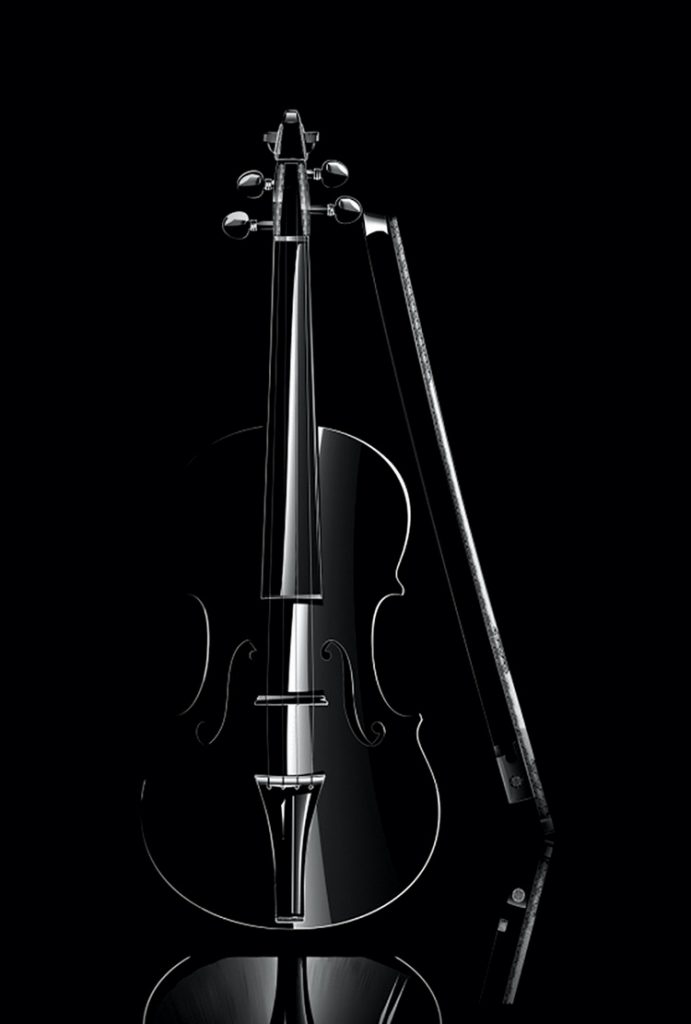
With a line array you also have the advantages of a smaller vertical spread. To turn a line array into a line source, the array must be higher than half the room height. The theory surrounding line arrays and line sources is complex. However, based on some substantial generalizations and simplifications, it can be reported that a line source has an all-round cylindrical radiation in the horizontal plane and a very narrow radiation in the vertical plane. ‘Cylindrical’ can then be regarded as a marketing concept, because in practice you absolutely do not achieve 360 degrees of radiation. The horizontal radiation is therefore wide, but will hit the side walls less as a result of other laws. The vertical radiation does not do that at all, so a line source will (in the living room) cause less acoustic coloring and problems with standing waves. In concert halls and pop concerts, you can use J-shaped line arrays to direct the sound to parts of the hall. Thanks to the limited vertical spread. This solves the problem that the audience at a certain (greater) distance only hears low and not high.
With a line array, the sound can therefore be ‘directed’ over a greater distance. The acoustics of the hall will also be less addressed. Line sources have a sound pressure reduction per unit length of 3 dB. That is less than the 6 dB of ‘normal’ speakers. A line source therefore sounds almost equally loud at any place in the living room. Line arrays can also realize a high sound pressure. This is due to the radiation coupling of the individual drivers from which a line array is built. But purely theoretically you can say that a line array is almost never a theoretically ideal line source, but in the most favorable case comes close to it.
The vM ED 7.2 comes close to a line source for mid and high. Combining a line source with a ‘normal’ woofer is possible, provided the ESD and the woofer are in phase. In summary, a loudspeaker that works as a line source offers a number of advantages. Namely, a higher sound pressure, much less distortion, an even sound pressure throughout the room and less activation of acoustic problems. Also, the larger line-array speakers can build a wall of sound, providing an experience closer to a live concert. The vM ED 7.2 therefore shows some of those features. Depending on the recording, the system can indeed produce an impressive ‘wall of sound’, but can also ‘scale’ beautifully.
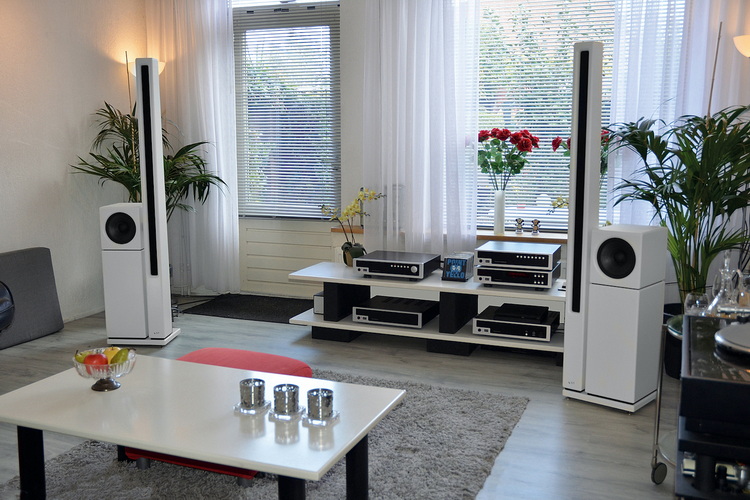
The stage that smaller floorstanding dynamics systems set up, compared to all kinds of panel loudspeakers and line arrays, is often slightly different. In general, it is striking that the stage of the latter is often more powerful, more energetic and more space-filling. The latter not so much with regard to the dimensions, but in the sense that such a stage has more ‘weight’ and density of information. Some somewhat larger dynamic floorstanders can do that too. The focusing and detailing of these speakers is very good by the way. There is also a remarkably good integration between the ESD and the dynamic woofers. The latter are fast and uncolored.
Convincingly
The manufacturer was also present during the listening. Something like that offers advantages, but also creates a dilemma. Courtesy then demands that you take some time to listen and rush through the familiar stack of twenty carefully selected CDs. The reality, however, is that with virtually every conceivable CD you know exactly what such a speaker can achieve after 20 seconds. Just take the TiTa Tovenaar LP (rare collector’s item) and you will know. Only that can appear disinterested, arrogant and rude. A reviewer must learn to live with this heavy burden and perhaps seek mental health support. With that in mind, the well-known Presto from Vivaldi’s The Four Seasons (Janine Janssen Concerto 2 L’estate) was shoved into the CD drawer. Now a kind of ‘desert island’ track.
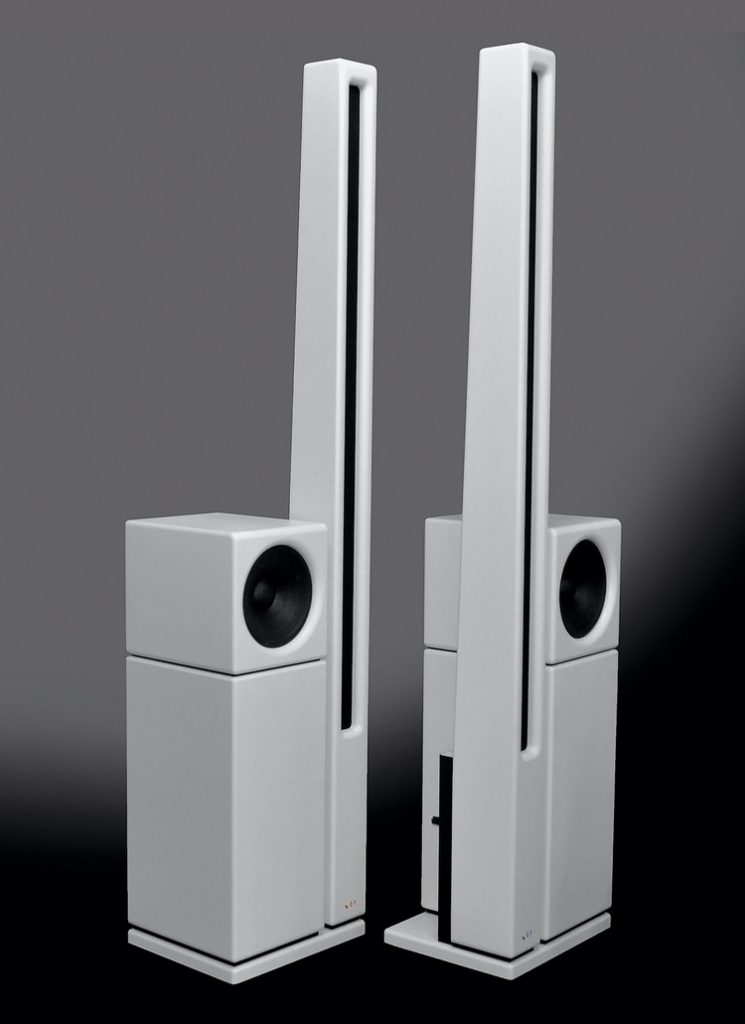
An audiophile from the family circle also plays this recording. With every change of cables or accessories, a miniscule sigh, beep or tingle is listened to. This must have a fixed geolocation within the stage that is accurate to the degree and must manifest itself with a certain strength and sound. If there is only a slight deviation, the gates of hell will open and the Van Dale will be expanded with new words. Completely derailed behavior. Isn’t a system for listening to music and perhaps telling how it affects you? Well, creeping into the role of an audiophile, it was noticeable that this recording sounded a little brighter than during experiences with other systems. Ad van Medevoort indicated that this has to do with the filter setting of the ESD, the high is adjustable at the back. The entire system is constructed in such a way that acoustically played music sounds as natural as possible. Agreed, fair enough. Nothing to be concerned about. Much pop music has already been colored in an unnatural way anyway.
The undersigned has a frame of reference that comes close to a natural representation. At the consumer’s home, with perhaps different electronics, different cables and different acoustics, the end result will be slightly different. However, the Presto was put down convincingly. It is a bizarrely difficult piece to reproduce properly, like a lot of baroque music. However, with a good system, such as the vM ED 7.2, such a recording can be spectacular. The vM ED 7.2 can be bi-wired and bi-amped. The first concept is often rejected by professionals, based on multiple arguments. Bi-amping can make sense. Maybe OTL tubes on the ESD and solid state on the woofer? Then pay attention to sound differences and the phase. In any case, with bi-amping, it is often possible to adjust the levels between the ESD and the woofer. This is useful if these speakers are a bit closer to the back wall. The low must then be adjusted back. But there is then in any case less spatial representation. The ideal position for this electrostat and in principle any other loudspeaker is a place that is some distance from the walls. A music lover therefore first places the speakers and then the rest of the furniture, if that still works. The rest can then go to the cycle. as far as that still works. The rest can then go to the cycle. as far as that still works. The rest can then go to the cycle.

Epilogue
The new vM ED 7.2 hybrid electrostatic loudspeaker performs very well, is reliable and will not be overtaken by a new model after six months. The dynamic closed woofer unit matches well with the electrostatic panel and is especially fast, neutral and linear. The sound pressure of the system is almost the same at every position in a living room and there is no hotspot. The fans of Van Medevoort can therefore update and listen to music quietly for the next decade. Apart from the neutrality, speed and transparency, it is especially the space-filling capacity of such a system that is very appealing. With a good placement, there is more of a live stage experience
